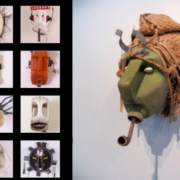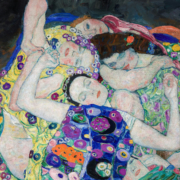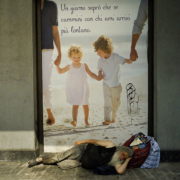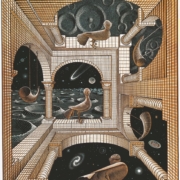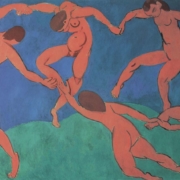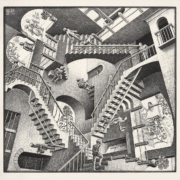Presentation “Group and Migration”
Abstract
In the introduction some fundamental ideas that are relative to the analysis of immigration processes and cultural exchange are illustrated according to psychoanalytic parameters. In addition, a new, in depth interpretation that suggests both points of connection and divergence between the different essays in the issue is given. This clarifies the central theme of the issue in a most detailed way.
This issue of Funzione Gamma collects contributions which look at the wide-ranging, complex theme of the meeting-conflict theme from varying cultural backgrounds. Today, this takes shape mainly in the dynamic of the relationship between the immigrant and the host country. Above all given the increase of immigration-emigration flows as a result of the current process of globalisation. The general theme is well examined in Lorenzo d’Orsi’s essay which looks at the problems that have arisen from the recent situation that is connected to the social policies immigration. His approach is anthropological which takes on the forms of racism and marginalisation that make cultural difference a problem. His suggestion that allows us to take a cultural analysis inside a greater equilibrium between relativism and universalism is precious. However, the point that I would like to underline is the reference to the risk of remaining closed inside a rigid vision of prejudice, as happens with the metaphor of goldfish in a bowl who are forced into a one-way view on the world. On the contrary, this introduces us to the possibility of getting out from the bowl and facing up to “prejudice” by not denying it which would lead to such negative consequences. If necessary, overcome it with positive overturnings from the point of view of reshaping individual, group and social aspects when considering cultural diversity. This idea immediately emerges us in group dynamics and in the psychoanalytical apex if we think about the potential of a group when it is formed in the “ectopic” area in its quality of a move of vision through an amplification of the symbolic and creative area (Siracusano, 1986). At the same time it leads us to the “aporetic” dimension of psychoanalysis that Francesco Corrao (1985) determined as being a potential space of knowing which is detached from the ordinary in order to rebuild new emotive and cognitive contexts. At a final analysis, the importance of a more authentic knowledge of difference in immigrants is evident.
The contribution of Virginia De Micco enters more directly into the idea of identity sufferance by the immigrant person. Her contribution suggests profound and precise reflection through research into children of different origins in a welcome centre. She clarifies that it is based on material that is not strictly clinical but arises from interviews with psychoanalytical attention and emphasis. We are led through the difficult and painful experiences of the children who grapple with feelings and emotions that are connected to a double belonging, the original and the host country. This has meant being able to get in touch with the complex processes of conscious and unconscious reorganisation of cumulated traumatic memories which are due to model family relationships that have to face up to the fact of acquiring new values and behaviour. The dual presence of psychoanalytic and ethno-psychiatric skill of the author is based on a solid structure of anthropological psychoanalysis in the fullest sense of the term. I think that the author is referring to an anthropological concept of man and of social and cultural factors which belong to mankind. This concept takes on greater relevance and reason for being if it is seen in the light of psychic dynamisms that psychoanalysis has examined and amplified. Psychoanalysis, which arose as a science from the uprooting and Diaspora of the Jews, seems to supply the most valid tools for a profound knowledge of the psychopathologies of immigration and a “therapeutic” intervention for these. Above all, when, and as is the case with De Micco’s contribution, there is a comparison with cultural complexity which new anthropological tendencies introduce us to.
The uprooting as an original subjective experience is the cue from which Marie Rose Moro takes inspiration when she says that her personal situation as a person who had to “emigrate” and reflects upon the weight of this experience in her choice of ethno-psychiatry, passing through medicine and philosophy, along the way of the tradition begun by George Devereux (1972) and taken up again by Tobie Nathan (1986) in France. The author re-proposes the perspective of complementary analysis between the “individual” psyche and “cultural” unconscious as “iso-morphous” discussions that meet in a dynamic way. She catches the fundamental idea of Devereux and gives ample space to the function of the group in Nathan’s therapeutic model. As a consequence, she refers to the group work of therapists who come from “mixed” cultural backgrounds and who take care of someone, individuals or a whole family group, who express a problem which shows a dominant “ethnic” leaning. In this context the problem of the language, of the translation of meanings that may be shared through systems of symbolic mediation becomes paramount. Compared to her base references, Moro seems to underline the importance of catching the multiplicity and richness of cultural intertwining as a necessary guarantee so as not to fall into the trap of excessive culturalism. The examples of her humanitarian “intervention sessions” in Afghanistan, which were also characterised by an active psychoanalytic listening, seem to give shape to an authentic and awareness of dialogue with the change and sufferance in situations of radical crisis that exist.
The comparison with Virginia De Micco’s suggestions is very interesting. Marie Rose Moro prefers the tendency towards a group dimension as the moment when individual unconscious and ethnic unconscious might reverberate together and drive a new set up of meaning systems. Virginia De Micco is more focused on the psychoanalytic dimension of the “internal group” as in the “cultural” Self, the expression of subjective order and on the social that becomes a transitional area in the Winnicott sense, it is a passing through of deep, trans-generational experiences that intervene in the redefining of identity processes which are a consequence of traumatic experiences in immigration-emigration.
I would like to look at two contributions in this issue which despite being different in theoretical structure and layout, they are searching for a similar comparison between models: the analytic group model and the complementary one in ethno-psychiatry of Angela Caselli, the one of music therapy and ethno-musicology in Daniela Altavilla’s comments.
In Caselli’s disciplined contribution, she looks at the ethno-psychiatric theories in the wake of Devereux-Nathan-Moro and she interacts them with the Foulkes model of group analysis. In this she recognises the privileged place of research of cultural meanings and their sharing-transformation in the associative therapeutic work with the medium sized group. The author seems to want to look for a summary that makes up an intervention model where the group context contains structural aspects such as: the transpersonal, the institutional, biological, anthropological and the socio-communicative. She also recognises the potential of mirroring in the group, the gathering of trans-generational aspects and the dimension of Group Koinonia (in De Mare’s overall sense) as being fundamental elements for an anthropological opening up. In her work, Daniela Altavilla draws an interesting comparison between music therapy and ethno-musicology. In highlighting the differences between the two approaches she underlines the importance of turning one’s attention to the cultural complexity of therapeutic contexts that are relative to other cultural contexts for those who are involved with music therapy. She pays particular attention to “coreutic”-musical rituals that are linked to possession cults in Africa. Here we are moving around in a different environment from the psychopathology of immigration which is, nonetheless, useful for comparing different ways of therapeutic intervention and cure that also have different concepts of illness and medicine. The author moves on ground that has had significant contributions such as those from Ernesto de Martino (1961) and Vittorio Lanternari (1998).
With the contributions from Ambra Cusin and Gerace-Amorfini we can enter a group clinical intervention area with immigrants in a more direct way. Ambra Cusin makes a very precise analysis of the bewilderment and uprooting conditions of immigrants who are exiled for political reasons and with which she worked as leader in a group experience. Cusin makes reference to significant psychoanalytic assumptions, starting from the Freudian hypotheses on the memory and finishing with the research on the function of language and its various connotations in the book by Amati Mehler, Argentieri and Canestri (1990). In order to give due space to the Babelof the unconscious, it is necessary to consider the discovery of the other using humility and listening but also calling on one’s own interpretive skills. We can deduce this from the work of the author’s group which seems to give prominence to emotional contact, to the exchange of dialogue and to a situation of reciprocal learning between exiles/immigrants who have benefited from the group experience and the group leader as well. The psychoanalytic dimension which arises is evaluated if it is considered from its opening up and change aspects and from its inclination to an analysis of the unconscious like an area of comparison with different types of humanity, an element or facilitating function of the intercultural meeting and the inter-subjective changes that it implies. Cusin also highlights the significant function of group sharing in order to permit one to transform emotions into words and reshape the narrative processes and memory by facing up to the most difficult aspects of cultural change.
Gerace-Amofini’s paper takes on a different dimension compared to the model of Nathan-Moro and that of the medium sized group. The authors talk about a therapeutic group experience of patients who were suffering from various psychopathologies when a South-West Asian immigrant joined the group. From a certain point of view they allow an element of cultural heterogeneity to enter the group, which at the beginning created some problems but over time became a very significant enriching factor. Group work is very strong emotionally and allowed the patient to work through his conflicts: those that were connected to his family life and the others to the model of the cultural life that he had left behind. The group became the place where the mental pain of his uprooting and loss was brought out. This occurred in a very strong manner and meshed with a common factor that otherwise would not have found another way of manifesting itself except through a somatic suffering. The use of dreams is fundamental, it allows for personal narration in the form of sharing it with the group and, as a consequence, the working through of feelings of nostalgia and catastrophic experiences that were caused by the break up of his identity. The theoretical context which the authors touch on refer to the concepts of commuting and efficient narration that Claudio Neri (1995) spoke about on many occasions. In the case of a foreign immigrant, it is also important to underline the delicacy of some research on equilibrium between the function of homogeneity (Marinelli, 2008) and the group process in heterogeneous dimensions which take in cultural diversity in full.
The work presented by many authors (Angelo Silvestri, Lorenita Colombari, Marjorie Crivelli, Emilia Ferruzza) regarding this point is significant. They took inspiration from a recent event that happened in Padova, Italy, which has highlighted the group dynamic and led to a feeling of refusal of foreigners. It is evident from the accurate and ample treatment of the subject that ethnic conflict inserts itself into a context of highlighting the traits because of a structural weakness of socio-cultural institutions that prepares the ground for the build up of barriers and rigid limits in relationships with foreigners. The outcome was the manifestation of that kind of dynamic that is characterised by huge mechanisms of splitting and projection that Giuseppe Di Chiara defined as the psycho-social syndrome (Di Chiara, 1999). The authors’ analysis that unfolds at parallel levels allows one to assimilate the dynamic of a small group for a wider social dimension. In a group experience that was inspired by the Foulks model, and, similarly, in a social dimension of an educational institute, the emergence of feelings that excessively reinforce specific identity forms, leads to the net differentiation of an “us and them” that is experienced in its persecutory extraneousness.
However, a different perspective has been presented by Francesco Fanoli in his reflections upon some anthropological research that was based on a lengthy interview with a Senegal artist who lived in Rome. The author highlighted the life story and inter-subjective relationship in the exchange between the researcher and the protagonist subject of the research. The narration became a sort of shared re-meaning of the cultural and psychological experience of an individual subject, who, through the reconstruction of the lineage that is connected to the local habits that were relevant to a historical and mythical context, caused an amplified dimension of a group tradition to emerge. The dialogue exchange allowed an accurate analysis of the transformations that were relevant to both the individual and group experience, in this case, regarding the changes in the group cultural history. A refined epistemological analysis constitutes optimal ground for reflection on cultural change, reconstructing the historical reasons that are connected to the European colonisation of Africa and placing it in the current situation of migratory processes and globalisation. It brings to mind the thought that contact with the other, in the form of the dialogue exchange, allows one to grasp both those elements of similarity that make it familiar and not conflicting and also the feeling of not belonging.
The contribution of Kakar stands out from the others for the field of analysis that he covers, and that it does not have a direct relationship with the problems of immigration. His reflection concerns an idea that is pertinent to the nature of intercultural relationships. As an Indian analyst with a developed sense of anthropological sensitivity, expands upon the prickly idea of violence between Hindu and Muslim in India. In particular, he concentrates on the violence which occurred in the 90s with the destruction of a mosque in an area that was predominantly Muslim. Kakar acutely analysed the historical, economic and psychological context, focusing on the processes of identity recognition, that was fully conditioned by the English domination and which in those circumstances had led to a deterioration between cultural and religious form of both groups. When the cultural changes, which coexist in many ways through relationships of mutual tolerance, are experienced as being compromising to the real existence in cultural, religious, economic and psychic subsistence terms for the group, dynamics that lead to the recognition of a dangerous rival in the other group are triggered. Thus we enter the time period of Kali, a time of violence if we refer to Giuseppe Di Chiara’s model of psychosocial syndromes (1999), we enter the strong and massive leaning towards projecting the denigrated and split parts of the Self into the adjoining group, thus considering it to be an enemy to fight. In Bion terms we could think about a form that is widened to a group that is based on the basic assumption of fight-flight that creates a corresponding group culture (Bion, 1971), which sees a solution of survival to catastrophic anguish in violence.
In his study, Kakar suggests an approach in which the interpretive psychoanalytical tool faces the analysis of the conscious and unconscious psychic dynamic in a softer way and, which is, at the same time, more effective. As he had previously suggested in his analyses on traditional Indian psychotherapies, it is possible to consider the fact that the shared myths in the group and all together and the forms of individual unconscious desires interact in a complex and flexible variety. This prospective allows one to be able to guarantee greater space and wider respite in front of evidence and significance of different contexts and then attribute a pre-eminent value to the simultaneous presence of the cultural/anthropological and psychodynamic parameters Kakar, 1982).
This point of view, that we can find in a different forming the contributions in this issue, may help us more adequately to face complex and difficult ideas such as the one of intercultural relationships and dynamics that are relative to the processes of immigration-emigration. Perhaps we may be able to rethink about the fact that, if it is true that, as we have already said, it is fundamental to consider the great difference of cultural contexts and we must also regain a common and shared sense. In the psychoanalytic field, the teaching is always valid of the Grinbergs who shed light on how the sense of uprooting and its connected feelings to catastrophic change in processes of immigration and exile are the expression as well as the historical experience of the Diaspora of individual experiences that assimilate stages of growth, mourning and personal loss due to an experience of migration (Grinberg, Grinberg, 1990, Lombardozzi, 2006). For each one of us, life itself is a following each other of migration. Besides, it is useful to underline that the fact that the relationship between migrants and host countries has the characteristics of a meeting-conflict that does not prevent sufferance and pain, bewilderment and identity conflict of all the involved protagonists. This is obviously done in a different way and to a different degree. The bursting of cultural otherness is always an element of great wealth and, at the same time, great disorganisation.
Contemporary cultural anthropology teaches us to appreciate the wealth of the forms of mixed blood in the global cultural exchange but without denying the bitterness of cultural and religious conflict. Today, physical anthropology and genetics of populations provide ample and detailed confirmation of the hypothesis that our species Homo Sapiens has an evolved history that is characterised both by continuous geographical movement and migration and by processes of hybridisation on a genetic level whilst, on the contrary, it disproves the biological support for the concept of race (Cavalli Sforza, Menozzi, Piazza, 1994, Lombardozzi, 2006).
We should also reflect upon the fact that in the future too there is likely to be another great movement of emigration for man, as Barack Obama wants when we achieve a mission to Mars in 2030. The anthropologist Marc Augé invites us to take into account some new possible scenarios when he uttered the following words which I will conclude my article with, ”Without having sufficient courage to be aware of it, we live in a period of transition which the Earth will only be the point of reference and departure. Space exploration has just begun but political and scientific evolution of the planet is already profoundly oriented towards this prospect” (Augé, 2008).
References
Amati Mehler, J, Argentieri, S., Canestri, J. (1990). La Babele dell’inconscio, lingua madre e lingue straniere nella dimensione psicoanalitica. Milano: Raffaello Cortina.
Augé, M. (2008). Che fine ha fatto il futuro? Milano: Elèuthera, 2009.
Bion, W.R. (1961). Experiences in group. London: Tavistock Publications. Tr. it. Esperienze nei gruppi. Roma: Armando, 1971.
Cavalli Sforza, L.L., Menozzi, P., Piazza, A. (1994). Storia e geografia dei geni umani. Milano: Adelphi, 1997.
Corrao, F. (1985). La dimensione aporetica della psicoanalisi. In Orme vol. 1. Milano: Raffaello Cortina, 1998.
De Martino, E. (1961). La terra del rimorso. Contributo a una storia religiosa del Sud. Milano: Il Saggiatore, 1961.
Devereux, G. (1972). Saggi di etnopsicoanalisi complementarista. Milano: Bompiani, 1975.
Di Chiara, G. Sindromi psicosociali. La psicoanalisi e le patologie sociali. Milano: Raffaello Cortina, 1999.
Grinberg, L., Grinberg, R. (1990). Psicoanalisi dell’emigrazione e dell’esilio. Milano: Franco Angeli.
Kakar, S. (1982). Sciamani mistici e dottori. Parma: Pratiche editrice, 1993.
Lanternari, V. (1998). Medicina, Magia, Religione, Valori, Vol. 2 Dall’antropologia all’etnopsichiatria. Napoli: Liguori, 1998.
Lombardozzi, A. (2006). Figure del dialogo, tra antropologia e psicoanalisi. Roma: Borla, 2006.
Marinelli, S. (2008). Contributi alla psicoanalisi di gruppo. Roma: Borla.
Nathan, T. (1986). La folie des autres: Traité d’ethnopsychiatrie clinique. Paris: Dunod. Trad. it. La follia degli altri: saggi di etnopsichiatria. Firenze: Gruppo Editoriale Fiorentino s.r.l., 1990.
Neri, C. (1998), Group. London and Philadelphia: jessica Kingsley Publishers. Gruppo (1995).Roma: Borla, 1995, II ed. 2004.
Siracusano, F. (1986). L’esistenza ectopica del gruppo. Gruppo e Funzione Analitica, VII (1).

